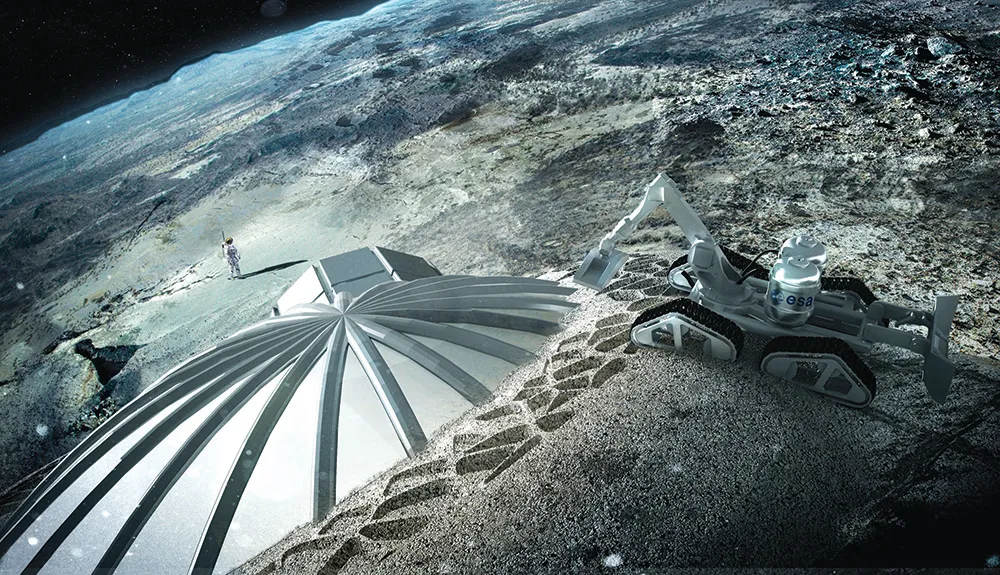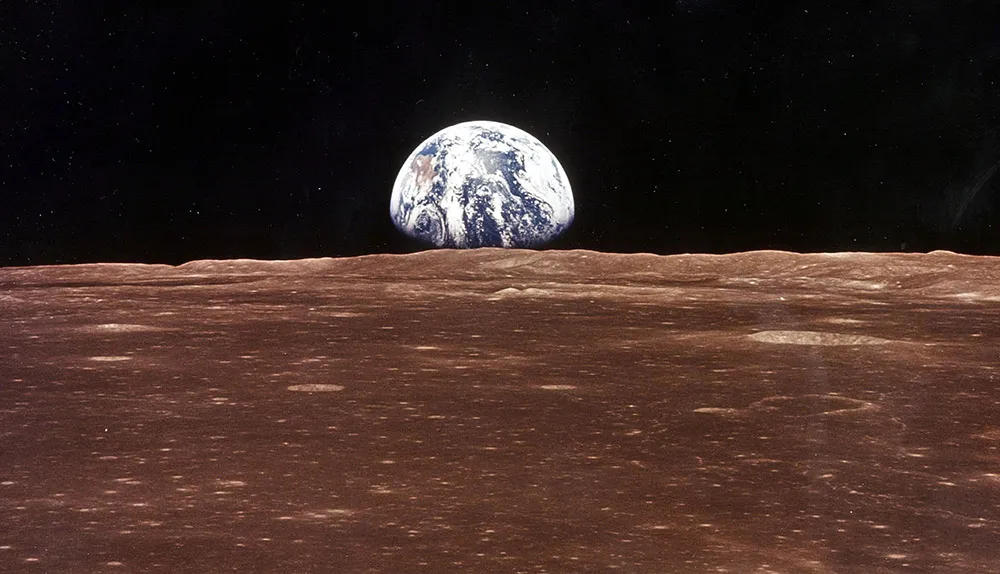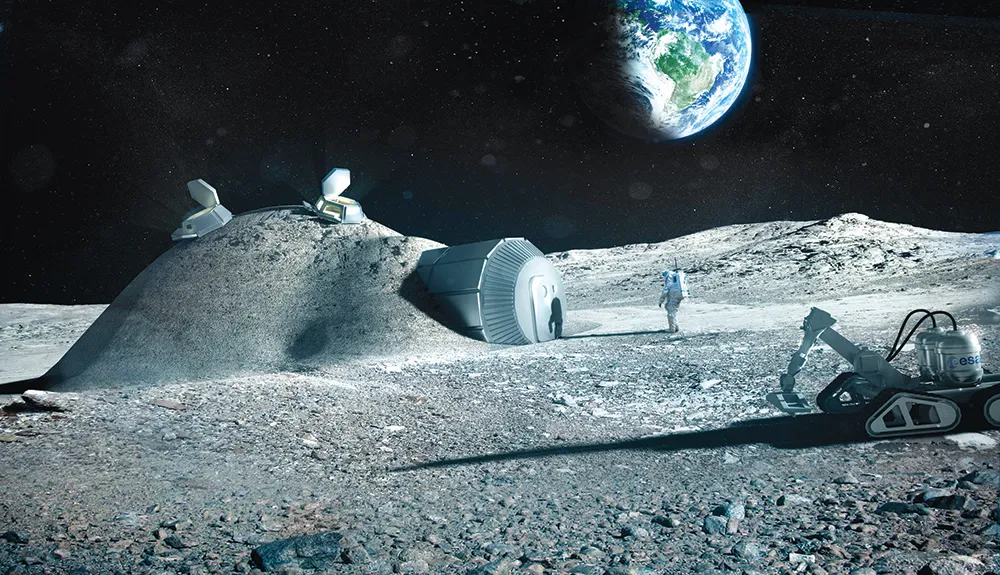So it’s your first day on the lunar surface? Welcome to Clavius Base! I’ve got two pieces of advice straight away. The first is: watch your head! Were you expecting Dr Evil’s lunar lair – Austin Powers, you know? – with glass domes and colour-coded uniforms?
Well, forget it. As you can see it’s small and cramped in here, with every surface cluttered up with equipment, or personal stuff where there’s room. This is where you can sign up for the EVA football team, by the way.
Every cubic metre of living space has to be built, kept filled with renewed air and shielded from radiation. Yeah, it is kind of like the ISS. We’re a space station located on the ground.
And the second bit of advice: don’t worry about the smell of burning.
Read more about the Moon:
- How to build a Moon base
- The origin of the Moon: how it formed and how we found out
- The origin of the Moon: a timeline of discovery
- The origin of the Moon: the key discovery
That’s Moon dust oxidising in the air – super-fine grains that get in through the locks and filters no matter what we try.
It’s corrosive as hell on seals and membranes, and gets in the pores of your skin. You get used to it.
Okay, here’s where you’ll probably spend most of your waking life: the health centre.

This entire base is a kind of experiment; we don’t know how human bodies will respond to lunar gravity and so we’re the lab rats who are going to provide the data. Hope you don’t mind needles!
I see you have a red centrifuge badge – lucky you! I’m blue, as you can see; I have to spend a couple of hours a day spun up to Earth gravity. The grey-badgers don’t get to spin at all, so they get nothing but lunar gravity pulling on their bones.
But you red-badgers get spun gently at one-third G, which is the same as Martian gravity. Experiments in partial gravity can’t be run on Earth, if you think about it.
What’s behind that blue door…? Don’t worry, I’ll tell you later.
So here’s one of our airlocks and a window looking out. Black sky, the ground a kind of tan colour. And the shape you see on the horizon is a robot miner, dredging the regolith for rare isotopes – fusion fuel for the Earth.
That angular oil-rig-like creation is laying down solar-cell panels; most of our energy on the base comes from the Sun.

Whatever your role you’ll get to spend plenty of time out there – heck, you’d soon go stir crazy if not. We maintain the equipment, which isn’t yet smart enough to do that for itself; we also play sports and go exploring.
I’m signed up for a jaunt to the Moon’s south pole next year. Maybe you’ll come along.
The view might not look like much. This is farside, of course, so during the lunar day there’s only the Sun in the sky. But at night… wow, you get the sky of deep space.
Buzz Aldrin, the second man on the Moon, said that the Milky Way must be full of small, rocky worlds like this, and if we can learn to live here we can live anywhere. And wherever we go, people will have skies like that. Makes you think, doesn’t it?
Okay, what we have here is the hydroponics bay. People spend a lot of their time in here – there’s just something about the green, growing things, I guess. Bonsai is a popular hobby.

And then there’s life support, and the stores, and the dormitories, and now we’re back by the main loading bay where we started out. It’s not so big, is it? But you soon get used to it. And we may need more room soon.
Let’s go back to the medical bay and that blue door… Shh!
Listen. That sound, my friend, is something new to the Moon after four billion years, and something entirely new for mankind. We’re all kind of proud. And it proves we’re here to stay. Yes, it’s a baby’s cry!
- This article first appeared in issue 287 of BBC Science Focus–find out how to subscribe here